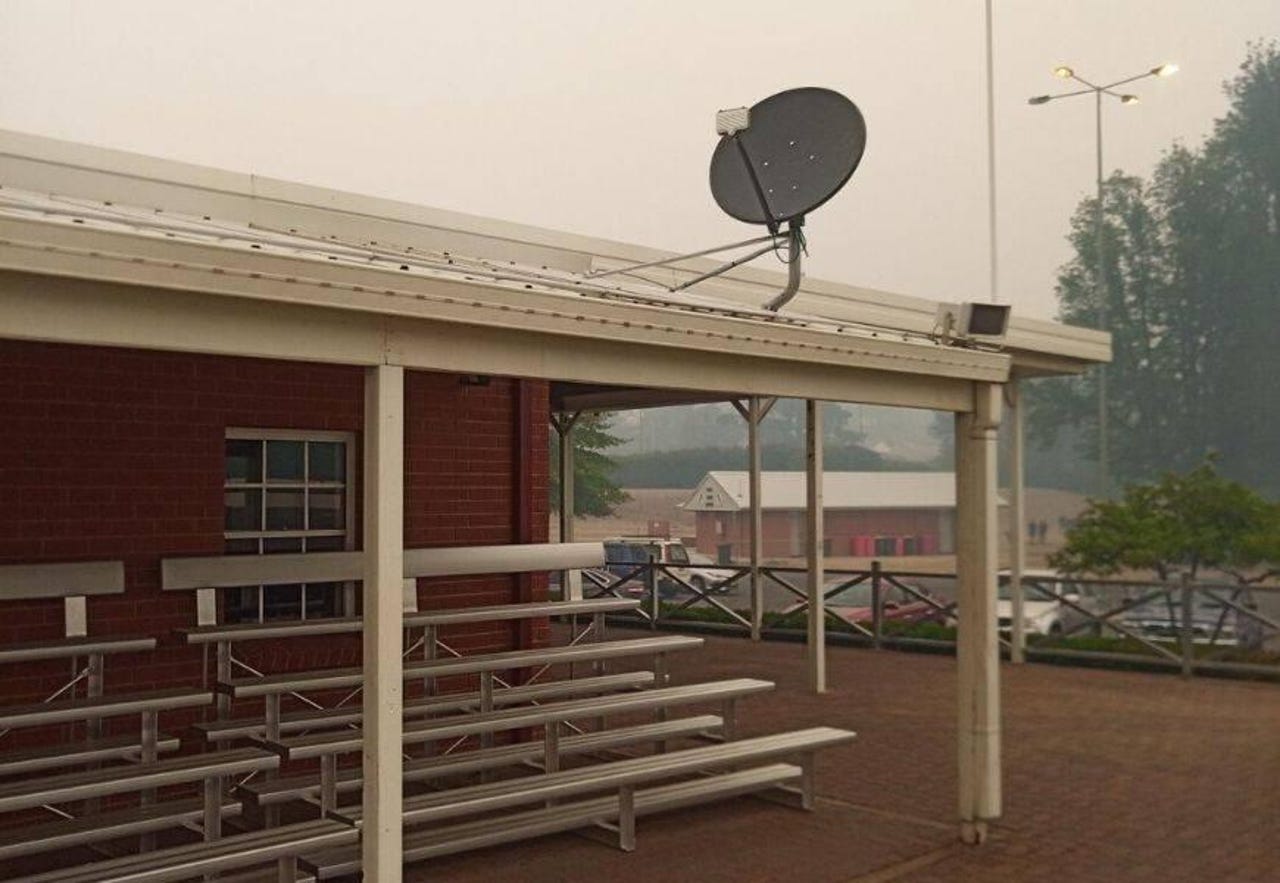Australian bushfires impacted 1% of all NBN services


The company responsible for deploying the National Broadband Network across Australia has revealed the extent to which the black summer bushfires of 2019-2020 impacted its network.
Responding to Senate Estimates Question on Notice, NBN said it had four force majeure events from November onwards as a result of bushfire, with 332 outages hitting 53,418 services. Due to it having 6.74 million active premises on its network as of January, the company said the overall impact affected 1% of its network.
Broken down by technology, 53% were fibre-to-the-node customers, 39% were on fixed wireless, with the remaining 8% undisclosed.
"12% (or 6,367 services) of all services impacted were directly impacted by fire over the duration of the bushfires," the company said.
"The remaining services were impacted by power outages as a result of the bushfires."
The peak impact was on New Year's Day when 22,655 services were impacted.
The figures from NBN are similar to those disclosed by an Australian Communications and Media Authority (ACMA) report in May, which said only 3% of mobile tower outages during the bushfires were due to fire damage, and of the 1,390 total facilities that were impacted by the fires outages, only 1% of incidents were a direct result of fire damage.
Network nodes were the most impacted telco infrastructure type, making up 56% of outages, and none due to fire damage. Mobile towers had the next highest number of outages, accounting for 36%.
"Information provided by the carriers indicated that backup power capability was generally available for all facilities that experienced an outage," the report said.
"However, the ACMA understands that access to backup power during a power outage may depend on several factors, including the configuration of the backup system, the working condition of the battery backup equipment and, in the case of generator-powered sites, the availability of fuel."
ACMA said 51% of facilities had outages of over four hours, 26% were out for under four hours, while 23% were impacted without suffering an outage, such as in cases the backup power was used until mains power was restored.
"The average length of outage incidents was 3.5 days and the median was 1.6 days, which indicates that facilities were generally restored promptly," the report said.
"This applies across all types of facilities, except equipment shelters, for which the restoration time was substantially longer than the average."
In February, NBN said it would look to preinstall satellite links at evacuation centres.
"We are very conscious that these climatic conditions are likely to continue and indeed to get worse, and we're conscious that as a network we need to test our resiliency, make sure that we have a network that can either recover quickly or is backed up in some way," NBN CEO Stephen Rue said at the time.
Elsewhere in its responses to Estimates, NBN said it had received 436,479 service faults thus far in fiscal year 2019-20, and dismissed the idea that retailers threatened to pull hybrid fibre-coaxial (HFC) sales when it ceased sales on the network in November 2017.
"NBN Co's relationship with retailers is generally characterised by open and forthright discussion rather than threats," the company said.
"As NBN Co acknowledged at the time of the HFC activations pause, concerns were being raised in relation to operational metrics such as held orders, network faults, and other assurance-related metrics."
NBN also revealed as of April 24, it had 32,000 premises labelled as service class zero (SC0) on the HFC network, representing 1.3% of premises able to get a service. For fibre to the basement (FttB), 3.4% or 19,000 premises were SC0, 16,760 or 1.4% of the fibre to the curb (FttC) premises were SC0, 10,500 fibre to the node (FttN) were categorised as SC0, and 0.1% or 1,540 fibre to the premises (FttP) connections were labelled SC0.
This is a dramatic drop from October, when over 10% of its HFC footprint was designated SC0.
As of the end of October, 257,552 premises on HFC, or 10.3% of its footprint, was SC0, 8% or 37,493 premises on FttB were SC0, almost 36,000 or 4.6% of the FttC network was SC0, 24,443 or 1.6% of the FttN network was SC0, and 3,413 or 0.2% of FttP was categorised as SC0.
By March 1, NBN had 6.71 million activated premises, 2.93 million of which were on FttN/B, 1.52 million were on HFC, 880,000 were connected with full fibre in brownfields, 500,000 received full fibre on greenfields connections, 480,000 got FttC, with 300,000 on fixed wireless, and 100,000 connected via satellite.
On Monday, Cisco announced it had recently finished testing of its SD-WAN equipment on NBN business connections and had created a number of reference designs. Businesses cannot purchase an SD-WAN solution from either Cisco or NBN and need to head to a Cisco reseller.
Related Coverage
- ACCC report and COVID-19 highlight how CVC is an artificial handbrake on the NBN
- Aussie Broadband throws 1Gbps speeds at full fibre and HFC users
- It wasn't just you, the NBN was slower at the back end of March
- NBN broadband tax clears Parliament
- NBN reports nine-month revenue up by over a third but EBITDA loss only closes by 9%
- Australian telco networks to get AU$37 million disaster resiliency boost
- NBN lines up AU$6.1 billion in bank credit